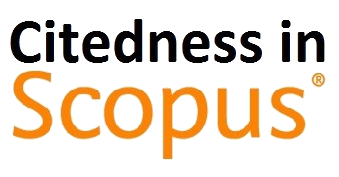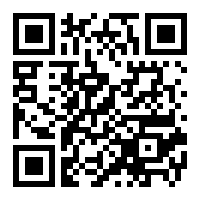Face Recognition Application Using the Eigenface Method for Employee Attendance at STMIK Budi Darma
(1) Technical Information, Universita Budi Darma
(2) Technical Information, Universita Budi Darma
(*) Corresponding Author
Abstract
Attendance is one of the most important repetitive transactions because it is related to the productivity of employees and employees and is one of the controlling indicators Human resources (HR) which aim to increase the potential of human resources as well used in the framework of efficiency. Current technological developments allow making a system that can assist humans in recognizing a digital image. One of them, a field that is currently being developed is pattern recognition. This technology identifies the special physical characteristics of a person. An example of pattern recognition is an example of face recognition, iris recognition, fingerprint recognition (finger recognition), and others. The face is part of the human body to be the focus of attention in social interactions. The face has a very important role that can show someone's identity; therefore a face can be used as a part of the human body that is used as an indication of knowing someone or face recognition. Attendance is an administrative act regarding attendance and absence attendance of employees. In this facial recognition, research uses a camera to capturing someone's face was then compared to the face that had previously been stored in a specific database. Broadly speaking, the process of facial recognition is the webcam camera captures the face. Then we get an R (read) value, G (Green), B (Blue). Using pre-processing, cropped, RGB to grayscale. After the Grayscale process is carried out, the face processing stage is carried out using the eigenface method. In this eigenface method, there are several core stages namely: converting faces to matrices, calculating Flat Vector averages, determining values eigenface, and perform the face identification process by looking for the eigenface value approaching. One of the ways of facial recognition can be developed into an application absence that can be applied in companies to prevent manipulation of absences by employees or employees.
Full Text:
PDFReferences
J. Coding, S. K. Untan, M. R. Muliawan, B. Irawan, Y. Brianorman, and J. S. Komputer, “Metode Eigenface Pada Sistem Absensi,” J. Coding, Sist. Komput. Untan, 2015.
A. Tasheva, Z. Tasheva, and P. Nakov, “Image Based Steganography Using Modified LSB Insertion Method with Contrast Stretching,” pp. 233–240, 2017, doi: 10.1145/3134302.3134325.
M. Slavkovic and D. Jevtic, “Face recognition using eigenface approach,” Serbian J. Electr. Eng., vol. 9, no. 1, pp. 121–130, 2012, doi: 10.2298/sjee1201121s.
J. Zhang, Y. Yan, and M. Lades, “Face recognition: Eigenface, elastic matching, and neural nets,” Proc. IEEE, vol. 85, no. 9, pp. 1423–1435, 1997, doi: 10.1109/5.628712.
A. R. S. Siswanto, A. S. Nugroho, and M. Galinium, “Implementation of face recognition algorithm for biometrics based time attendance system,” Proc. - 2014 Int. Conf. ICT Smart Soc. “Smart Syst. Platf. Dev. City Soc. GoeSmart 2014”, ICISS 2014, pp. 149–154, 2014, doi: 10.1109/ICTSS.2014.7013165.
J. Wu and Z. H. Zhou, “Face recognition with one training image per person,” Pattern Recognit. Lett., vol. 23, no. 14, pp. 1711–1719, 2002, doi: 10.1016/S0167-8655(02)00134-4.
S. Subiantoro and S. Sardiarinto, “PERANCANGAN SISTEM ABSENSI PEGAWAI BERBASIS WEB Studi Kasus : Kantor Kecamatan Purwodadi,” Swabumi, 2018, doi: 10.31294/swabumi.v6i2.4868.
M. A. Dewi, V. D. Anggraeni, S. A. Mudjadi, and A. Wicaksono, “Aplikasi Rekapitulasi Elektronik Absensi Guru & Pegawai ( Area-Gp ) Pada Sekolah Menengah Atas,” Semin. Nas. Teknol. Inf. dan Komun., 2014.
E. A. B. da Silva and G. V. Mendonca, “Digital Image Processing,” in The Electrical Engineering Handbook, 2005.
H. Al Fatta, “Sistem presensi karyawan berbasis pengenalan wajah dengan algoritma,” Image (Rochester, N.Y.), pp. 164–170, 2006.
E. Sutanta and A. Ashari, “Pemanfaatan Database Kependudukan Terdistribusi Pada Ragam Aplikasi Sistem Informasi Di Pemerintah Kabupaten/Kota,” J. Sist. Inf. Teknol. Inf. (SISFOTENIKA), STMIK Pontianak, Kalimantan Barat, ISSN 2087-7897, vol. 2, no. 1, pp. 11–20, 2012, [Online]. Available: http://www.sisfotenika.stmikpontianak.ac.id/.
J. Enterprise, MySQL untuk Pemula. 2014.
DOI: https://doi.org/10.30645/ijistech.v4i1.71
Refbacks
- There are currently no refbacks.
Jumlah Kunjungan:
Published Papers Indexed/Abstracted By:












